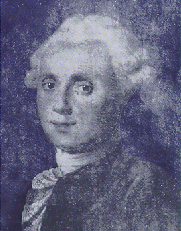Imaging – Messier Observing Program Coordinator:Scott Kranz |
 |
 |
IntroductionAlmost every amateur astronomer begins to be aware of the Messier Catalog as soon as he or she opens their first book. The novice is sure to find some spectacular object pictured and designated by its “Messier Number” with the universal abbreviation “M”. Of the myriads of star clusters and nebulae scattered over the sky only about 100 (perhaps 110 at most) can claim membership to this celebrated list. However, this happens to include most, but not quite all, of the finest of these objects observable from mid-northern latitudes. This Observing Program is provided for the astrophotographers wishing to capture these objects and hone their astrophotography skills. If you are not an astrophotographer, then the Visual Messier Observing Program is located here. Even an extremely brief review of the history of Messier’s Catalog will explain why it contains so many bright and easy clusters and nebulae. |
 |
 Background Information
Background Information
Charles Messier (1730-1817) was a French astronomer who developed an intense interest in comet hunting. While he had other achievements to his credit, this was his chief occupation during his long observing career. In this, he was so successful that he probably observed half of the comets known in his time. He discovered about twenty. It was to keep track of the star clusters and nebulae which might have otherwise confused him by their comet-like appearance, that he began to catalog and describe them. In commenting on his catalog in later years, he frankly stated that he had compiled it in order to aid other comet hunters. There is a slight touch of irony in the fact that Messier’s chief claim to immortality grew out of his efforts to rid himself of a nuisance to what, he felt, was his important life’s work. As might be expected, Messier’s telescopes were all modest instruments, none of them exceeding the capacity of telescopes amateurs can expect to own today.
Messier did not discover all the objects in his catalog and he never made any such claim. Many of the objects were called to his attention by his contemporaries, notably Pierre Méchain and the fact was always carefully noted. The catalog was published in several stages as additions were made to it, the first 45 entries being printed in 1771. In its classic form, it contained 103 entries. Studies of Messier’s papers and correspondence (Dr. Helen Sawyer Hogg and Dr. Owen Gingerich) suggest that another four to six objects should be added to bring the total to 110.
The prospective observer should be warned that if he follows the older editions of the catalog, or many of the older charts, he or she may find nothing in the position indicated. More recent editions have corrected these errors but there are a few entries about which there is some doubt.
Requirements and Rules
This certification is available to members of the Astronomical League, either through their local astronomical society or as members at large. If you are not a member and would like to become one, check with your local astronomical society, search for a local society on the Astronomical League Website, or join as a Member-At-Large in the Al Store .
| The Astronomical League offers special recognition in the form of an Imaging – Messier Observing Program certificate for those who have imaged all 110 of the Messier objects. There is only one level of this certification (certificate and pin).
Note: For those members who have already earned the Messier honorary certification, no new pin will be awarded, only the additional certificate. To obtain certification you must observe these rules: Rule 1:Image all 110 Messier objects and keep a record of your observations. Your notes must include: |
 |
Rule 2:Have your observing log and images examined by an officer of your Astronomical Society or a suitably qualified second party. If you are not a member of a society you may send a copy of your logs and images to the Imaging – Messier Observing Program Coordinator directly, or make them available on the internet. After reviewing and approving your observations this party should forward a letter or email to the effect that you have met the requirements or the Imaging – Messier Observing Program. Be sure to include your name, mailing address, email address, phone number, and society affiliation. This letter should be addressed to the Imaging – Messier Observing Program Coordinator. |
 |
Only non-society members need to actually mail their observing log to the Imaging – Messier Observing Program Coordinator. The letter should specify the address to which the certification should be mailed. The certificate will be suitable for framing.
If you are approving a submission for the Coordinator, it is critical that you tell the Coordinator that this is an Imaging certification.
Also “Messier Marathon” sessions where all the objects are found in one night will not be accepted.
Submitting for Certification
Messier Observing Program Coordinator:
Scott Kranz
106 N Darrowby Drive
Raymore, MO 64083-9181
(816) 522-8921
E-mail: s.kranz1@comcast.net
Upon verification of your submission and of your active membership in the Astronomical League, your recognition (certificate, pin, etc.) will be sent to you or to the awards coordinator for your society, as you specified. Your name will also appear in an upcoming issue of the Reflector magazine and in the Astronomical League’s on-line database. Congratulations. Good luck with your next observing challenge.
Notes:
Looking for more Information and Opportunities?
- The Astronomical League Web Store has a great manual available with information for this Observing Program. It is available here.



